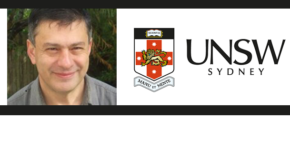 Stem cell research can be politically divisive.
Stem cell research can be politically divisive.
Robert Nordon, associate professor in the graduate school of biomedical engineering at the University of New South Wales, says a new way of making them may calm debate.
I am an Associate Professor in the Graduate School of Biomedical Engineering, University of New South Wales, Sydney. I have a medical/engineer background, graduating in Medicine in 1986 (MB BS, BMedSci, UNSW), and practicing medicine for 8 years before receiving a PhD in Biomedical Engineering at the University of New South Wales. I work closely with industry in the fields of cell and gene therapy translation, advanced manufacturing and medical technologies. Since 2016 I have been awarded over $5M in research grant funding in the fields of point-of-care diagnostics, cell and gene therapy manufacture and stem cell science.
Making Blood Stem Cells on a Microchip
Blood stem cells are precious, because they can be used to save lives by regenerating blood after high doses of chemotherapy to treat aggressive blood cancers. Patients need a closely matched donor which are in short supply for the therapy to be a success.
The discovery of induced pluripotent stem cells in 2006 led to a promising new approach. Pluripotent stem cells grown in the lab, are made from the patient’s own cells, so that there is no problem with tissue rejection, or the ethical issue surrounding the use of IVF embryos. They are called pluripotent, because they closely resemble embryonic stem cells that are the starting point for all other cells in our bodies. In theory induced pluripotent stem cells could provide an unlimited supply of cells for blood regeneration because they are immortalized and can grow in the lab indefinitely.
To grow blood stem cells from pluripotent stem cell lines, one must mimic the complex process of embryogenesis in the dish. This is why we designed a special type of microchip that uses microfluidics to mimic the embryonic heart and circulation in the lab. We harvested circulating cells and grew them in culture, showing that they develop into red and white blood cells. Our study showed that pulsatile circulatory flow enhances the formation of blood stem cell precursors from pluripotent stem cells. The next step in our research is the scale up production of blood stem cells and test their transplantation potential in immune-deficient mice that can accept human transplants.
Read More:
The blood stem cell research that could change medicine of the future | UNSW Newsroom


Comments
4 responses to “Robert Nordon, University of New South Wales – Making Blood Stem Cells on a Microchip”